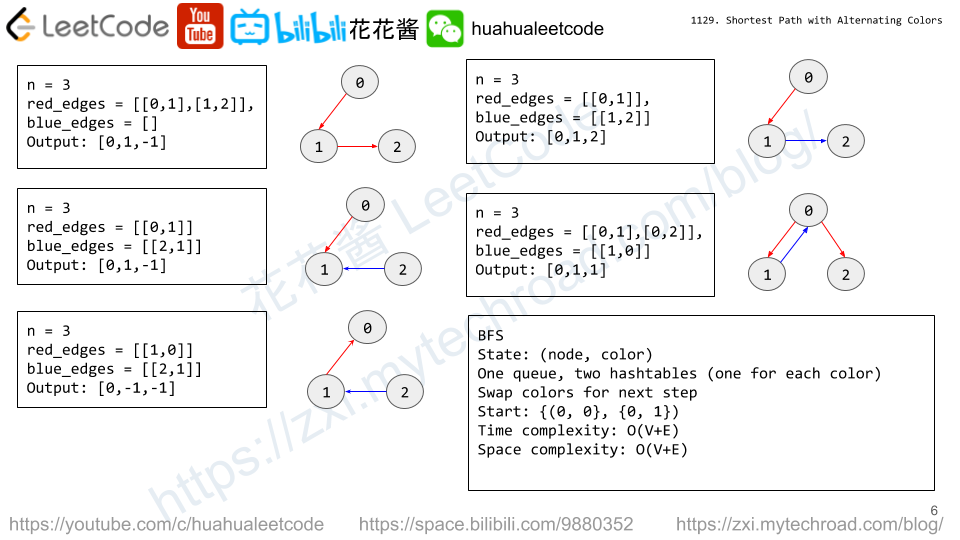Given an N x N grid containing only values 0 and 1, where 0 represents water and 1 represents land, find a water cell such that its distance to the nearest land cell is maximized and return the distance.
The distance used in this problem is the Manhattan distance: the distance between two cells (x0, y0) and (x1, y1)is |x0 - x1| + |y0 - y1|.
If no land or water exists in the grid, return -1.
Example 1:

Input: [[1,0,1],[0,0,0],[1,0,1]] Output: 2 Explanation: The cell (1, 1) is as far as possible from all the land with distance 2.
Example 2:

Input: [[1,0,0],[0,0,0],[0,0,0]] Output: 4 Explanation: The cell (2, 2) is as far as possible from all the land with distance 4.
Note:
1 <= grid.length == grid[0].length <= 100grid[i][j]is0or1
Solution: BFS
Put all land cells into a queue as source nodes and BFS for water cells, the last expanded one will be the farthest.
Time compleixty: O(n^2)
Space complexity: O(n^2)
C++
|
1 2 3 4 5 6 7 8 9 10 11 12 13 14 15 16 17 18 19 20 21 22 23 24 25 26 27 28 29 30 31 32 33 34 |
// Author: Huahua, 48 ms, 13.4 MB class Solution { public: int maxDistance(vector<vector<int>>& grid) { const int n = grid.size(); const int m = grid[0].size(); int ans = -1; queue<int> q; // y*100 + x for (int i = 0; i < n; ++i) for (int j = 0; j < m; ++j) if (grid[i][j] == 1) q.push(i * 100 + j); vector<int> dirs{0, -1, 0, 1, 0}; int steps = 0; while (q.size()) { int size = q.size(); while (size--) { auto p = q.front(); q.pop(); int x = p % 100; int y = p / 100; if (grid[y][x] == 2) ans = max(ans, steps); for (int i = 0; i < 4; ++i) { int tx = x + dirs[i]; int ty = y + dirs[i + 1]; if (tx < 0 || tx >= m || ty < 0 || ty >= n || grid[ty][tx] != 0) continue; grid[ty][tx] = 2; q.push(ty * 100 + tx); } } ++steps; } return ans; } }; |
